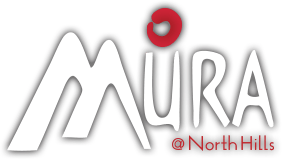We love going to our kitchen; that is why for most family members, it is considered the favorite area to be in. Just imagine the sweet aroma from the morning coffee to the delicious smell coming out of the cooking pan while you are preparing your favorite meal.
It is the area in our house that excites us the most because we love to eat good food before going out to work or after a stressful day. At the same time, we are aware that without proper maintenance and check-ups, the kitchen could destroy the entire house in an instant.
![TOP 5 KITCHEN SAFETY PROCEDURES THAT YOU NEED LEARN [year] 2 kitchen safety procedures](https://muranorthhills.com/wp-content/uploads/2022/11/191009-cooking-vegetables-al-1422.webp)
That is why learning the necessary safety procedures (or habits) will remove, and if not all, reduce the risk of an accident like a gas stove or faucet leakage, overheating of cooking appliances, and more.
Table of Contents
Avoid doing multiple tasks that could cause an accident.
It is essential to do things one at a time, whether it will be cooking, baking, washing the dishes, cutting the ingredients, or cleaning the kitchen table and appliances.
Concentrate on a single task, and do not push yourself to do more, even if you are in a hurry. Otherwise, accidents may happen because you cannot be all over the place all the time. Taking your attention on a single task is much easier and quicker to get it done.
![TOP 5 KITCHEN SAFETY PROCEDURES THAT YOU NEED LEARN [year] 3 kitchen safety procedures](https://muranorthhills.com/wp-content/uploads/2022/11/200319162747-family-cooking-stock-super-tease.webp)
Consider getting pet, animal, and insect entrapment equipment
We are familiar with the quote: “when the cat is away, the mouse will play.”
When we step out of the kitchen, that is when our pets, unwanted rats, cats, and insects will invade—of course, that is with the intent of getting some food to eat. There are times as well that we forget to lock the doors or close the windows after a meal. That is why you must have entrapment equipment to make sure that it will not cause you any trouble.
You could get some mouse traps, mouse poison (not recommended when you have small kids at home), microchip catflaps, insect light traps, etc. You do not have to worry because they are safe and easy to use.
![TOP 5 KITCHEN SAFETY PROCEDURES THAT YOU NEED LEARN [year] 4 kitchen safety procedures](https://muranorthhills.com/wp-content/uploads/2022/11/kids-cooking-mc-main1-200922.webp)
Organize and sanitize the cooking tools, utensils, and appliances
You are kept safe from danger with well-arranged things in your kitchen. Store your regularly used utensils in easy-to-access sections, such as cups and glasses, knife sets, plates and bowls, and other types of cooking facilities. Do not put them where it is hard for you to access them. And then store the heavy things on low shelves to prevent accidents from falling or outbalance. Seasonal things or those you might not use that much must be stored on the top shelves.
When organizing the kitchen, you may sanitize the tools by using a handheld steamer at best.
![TOP 5 KITCHEN SAFETY PROCEDURES THAT YOU NEED LEARN [year] 5 kitchen safety procedures](https://muranorthhills.com/wp-content/uploads/2022/11/mom-and-daughter-cooking.webp)
Always practice the proper handling of kitchen tools and equipment
In any cooking operation, the right tool handling is a must. To ensure safe and efficient use, check your tools and equipment before cooking begins. Avoid using defective and broken equipment that could cause the accidents, such as short circuit wirings that could cause a fire.
Choose the right tool, particularly knives, for every specific job. Choosing the appropriate knife for a particular job will also minimize the workload without doing any harm to the equipment or the environment in which you work. Each knife is designed specifically for a certain function. For each particular cutting and slicing form, various types of knives are required. It is useful to look for or review its specifications and purposes.
![TOP 5 KITCHEN SAFETY PROCEDURES THAT YOU NEED LEARN [year] 6 kitchen safety procedures](https://muranorthhills.com/wp-content/uploads/2022/11/4a78f148-d427-4209-8173-f33d04c44106.webp)
Do not alter your tools. Wear proper kitchen protective outfits for extra protection, like aprons, gloves, and potholders.
Always clean and organize the countertops and tables
On countertops and tables, manage the disarray or disorder. Do not put it on your kitchen table and countertop with too much stuff. Only limit those required for the day. You are free to move around your kitchen if you put away extra items. The first step to decluttering is to clean the counter. Remove items from your counters, including ornamental objects, appliances, food, and unwanted waste.
Final Thoughts
Safety measures are typically defined as methods in which individuals, equipment, materials, environment, and processes are to conduct tasks at minimal risk. Safe working practices are a list of actions that direct a worker in a proper sequence from start to finish. And it is applicable to whatever course of activities that you are dealing with, including cooking.
The necessary kitchen safety procedures should not be taken for granted by any kitchen enthusiast. It is not difficult to regularly apply the above-mentioned safety methods head-start because we want to keep our hard-earned property for a long time.
Finally, we want to keep the safety of our family members as the top priority on any occasion.
G Patel has been honing his craft in the restaurant industry for over 25 years. After graduating from North Carolina State University with a degree in business, G set out to turn Eschelon Hospitality into a recognized brand throughout Carolina’s state restaurants; and he did just that when acquiring Mura North Hills. Since then, it has become an iconic sushi-serving establishment.

![TOP 5 KITCHEN SAFETY PROCEDURES THAT YOU NEED LEARN [year] 1 kitchen safety procedures](https://muranorthhills.com/wp-content/uploads/2022/11/70fc803076f40adf1bb20f52bcd2c78f78efbc2e.webp)